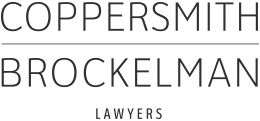COVID-19 LEGISLATION: What Employers Need to Know

In the early morning hours of Saturday, March 14, the U.S. House of Representatives passed the Families First Coronavirus Response Act (Act), which includes two sections providing emergency paid leave rights to employees. After some modifications by the House on Monday, the bill went to the Senate, which overwhelmingly approved it on Wednesday, March 18. President Trump signed it the same day.
The two leave-related components of the legislation take effect on April 2, 2020, 15 days after enactment, and sunset (expire) on December 31, 2020. For unstated reasons – but likely a political compromise – the law applies only to private-sector employers with fewer than 500 employees. (It also applies to public agencies of all sizes.) Below is a summary of what such employers need to know.
Emergency Family and Medical Leave Expansion Act (EFMLEA)
- Covered Employers: In contrast to the “regular” FMLA, which covers employers with 50 or more employees, employers with fewer than 500 employees are covered by the EFMLEA. The Act gives the Department of Labor (DOL) authority to issue regulations exempting smaller businesses (those with fewer than 50 employees) if complying with the new requirements would jeopardize the viability of the business, but it’s unclear at this point what such a regulation will look like, or how or when employers would pursue such an exemption.
- Covered Employees: All employees, whether full-time or part-time, who have been on the employer’s payroll for 30 or more days are eligible for benefits under the EFMLEA. This again differs from the regular FMLA, which requires 12 months of service and 1,250 hours worked in the previous 12 months. Employers may exclude employees who are health care providers or emergency responders from this leave entitlement.
- Reasons for Leave: An eligible employee may take leave for “a qualifying need related to a public health emergency.” The Act as finally passed is much narrower than the original House bill – it limits this need to circumstances where the employee is unable to work (including telework) due to a need to care for a minor child if the child’s school or child care provider has been closed due to coronavirus or the child’s caregiver is unavailable due to coronavirus.
- Amount of Leave and Pay: An eligible employee meeting the above criteria must be provided with up to 12 weeks of job-protected leave. The first two weeks (10 workdays) may be paid or unpaid, at the employer’s discretion, and the employee may elect, but cannot be required, to use accrued paid time off (whether vacation, personal, or sick leave). After the first two weeks, the employer must pay the employee at least two-thirds of the employee’s regular rate of pay for the number of hours the employee otherwise would be scheduled to work, subject to a cap of $200 per day and $10,000 in total.
- Job Restoration: As with all FMLA leave, leave under the EFMLEA is job protected, meaning an employee returning from leave must be restored to his or her position or an equivalent position. This right to job restoration generally does not apply if the employer has fewer than 25 employees and the employee’s job has been eliminated while the employee was on leave because of circumstances caused by a public health emergency (such as a drastic downturn in the employer’s business). Certain conditions also must be met to deny restoration, including reasonable attempts to return the employee to an equivalent position, and required efforts to contact a displaced employee for up to a year after that employee’s departure.
- Some Protection for Small Employers: The Act exempts employers with fewer than 50 employees from civil damages (back pay or liquidated damages) in an FMLA lawsuit. But this does not excuse compliance with the Act or immunize employers from legal action alleging violation of the law.
Emergency Paid Sick Leave Act (EPSLA)
- Eligible Employees: All employees of employers with fewer than 500 employees are eligible for paid sick leave, regardless of how long they have been on the employer’s payroll.
- Reasons for Leave: Employees are eligible for paid sick time if they are unable to work for any of the following reasons: (1) the employee is subject to a federal, state, or local quarantine or isolation order related to COVID-19; (2) the employee has been advised by a health care provider to self-quarantine because of COVID-19; (3) the employee is experiencing symptoms of COVID-19 and is seeking a medical diagnosis; (4) the employee is caring for an individual subject or advised to quarantine or self-isolate; (5) the employee is caring for a son or daughter whose school or place of care is closed, or child care provider is unavailable, due to COVID-19 precautions; or (6) the employee is experiencing substantially similar conditions as specified by the Secretary of Health and Human Services, in consultation with the Secretaries of Labor and Treasury.
- Amount of Leave: Full-time employees are entitled to 80 hours of paid sick time. Part-time employees are entitled to paid sick leave equal to the number of hours the employee works, on average, over a two-week period. (The Act does not define “full-time” and “part-time,” but as a practical matter employers should pay the average number of hours the employee works over a two-week period, with a cap of 80 hours.) There is no carryover of unused hours to next year.
- Amount of Pay: Paid sick leave hours are paid at the employee’s regular rate of pay for leave taken because of the employee’s own illness or quarantine, subject to a maximum of $511 per day and $5,110 total. For leave taken to care for a family member or due to school or childcare closure, sick leave is paid at two-thirds of the employee’s regular rate of pay, subject to a maximum of $200 per day ($2,000 total).
- Sequencing with Existing Sick Leave: The Act requires that employees be allowed to first use sick leave under the EPSLA, then any remaining accrued paid leave under an employer’s policy. Additionally, any special additional sick leave that an employer may have provided before April 2 can’t be credited against the employee’s EPSLA entitlement.
- No Carryover: EPSLA hours cannot be carried over after December 31, 2020 (when the Act sunsets). Additionally, while not entirely clear, the wording of the Act strongly suggests that an employee’s right to take emergency paid sick leave ends after they return from a leave, and that EPSLA hours cannot be used intermittently.
- Posting: Employers must post a notice about the paid sick leave provisions. The DOL is required to make a model notice available within seven days of the law’s enactment. Presumably, this will be posted on the DOL’s website for downloading.
- Retaliation: It’s prohibited. Don’t do it.
- Penalties: Failure to provide the required sick leave will be deemed a violation of the FLSA’s minimum wage requirement, exposing employers to liability for liquidated (double) damages and the employee’s attorneys’ fees.
Tax Credits
To help offset much of the cost of providing emergency FMLA and paid sick leave, employers required to offer these benefits are eligible for refundable tax credits against the employer’s quarterly FICA (Medicare and Social Security) taxes.
